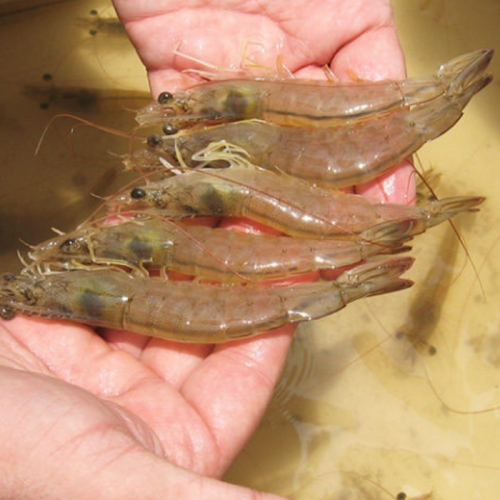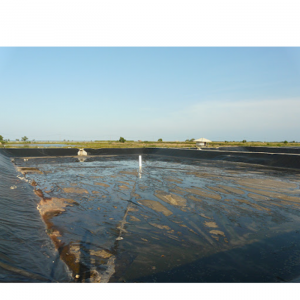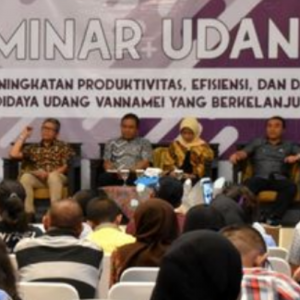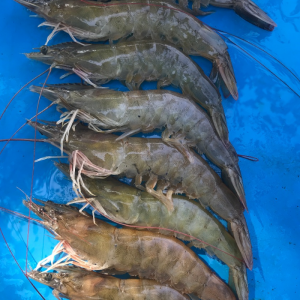
Supplementing Rotifers to Reduce Stress for White Shrimp
| Fri, 13 Mar 2020 - 11:20
Supplementation of rotifers Ampithoe sp. in the diet helps to reduce stress for farmed shrimp.
The dense stocking density puts shrimp under serious environmental stress, increasing susceptibility to diseases, directly reducing crop efficiency. Ammonia nitrogen (ammonia-N), a cause of stress in shrimp farming, is mainly created by decomposing organic waste such as feed residues and shrimp feces in the water, too much ammonia-N content in the water. Accumulation in the organism affects growth, reduces survival and causes great economic losses to the aquaculture industry. Effective methods to increase ammonia-N tolerance of shrimp will have great implications for aquaculture.
To enhance the stress tolerance of aquatic animal farmers can improve by increasing nutrition. Natural foods with high nutrient content and palatability have been used as nutritional supplements to enhance the stress tolerance of shrimp.
Ampithoe sp. is rotifers rich in crude protein (51.2% dry weight), unsaturated fatty acids (41.9% of total fatty acids) and essential amino acids (22.2% of total amino acids). This is an excellent organism to reduce the accumulation of ammonia-N and urea-N in the blood and enhance the ammonia-N tolerance of whiteleg shrimp (Shan et al., 2018). However, the supplement mechanism Ampithoe sp. Helping to improve shrimp's stress tolerance is still unclear.
In the current study, the mechanism of increasing ammonia-N tolerance in vannamei was supplemented with Ampithoe sp. Freezing (FDPA) has been studied from the perspective of oxidative stress, metabolic network stress causing metabolic disorders.
Research on application of Ampithoe sp. to the diet of white shrimp
In the current study, shrimp were divided into three groups and fed a supplemental diet containing 33% FDPA for 0 days (S0 group), 21 days (S21 group) or 42 days (S42 group). Subsequently, three groups of shrimp were exposed to ammonia-N (1.61 mg / L) for 96 hours, and changes in oxidative stress, endothelial network stress (ER) and hepatic lipid metabolism. Pancreas has been studied.
Result
After 21 days of exposure to ammonia, S0 group without FDPA supplementation had the highest mortality rate of 46.7%, while the S21 group had the lowest mortality rate of 30.0% and the feeding group had 42 days of mortality. 33.3%.
The activity levels of superoxide effutase (SOD) and catalase (CAT) in the hepatopancreas of shrimp increased in the FDPA diet groups compared to the S0 group. The level of malondialdehyd oxidation (MDA) and mRNA expression of the binding protein were significantly reduced in the S21 and S42 groups compared to the S0 group.
Moreover, lipid synthesis (FAS), acetyl-CoA carboxylase (ACC) and malonyl-CoA (MCoA) were reduced; Carnitine palmitoyltransferase (CPT) activity has increased; and decreased free fatty acid (FFA) and triglyceride (TG) concentrations in the hepatopancreas of shrimp fed the FDPA diet compared to shrimp fed the control diet.
Ammonia-N stress causes oxidative stress in L. vannamei , which causes endoplasmic reticulum stress in the hepatopancreas and leads to increased lipid synthesis and reduced lipid breakdown. Results from the study indicated that adding 33% of FDPA to whiteleg shrimp feed within 21 days could enhance antioxidant capacity and reduce ER stress due to ammonia-N exposure, thus ensuring metabolism, provide normal energy for the body and enhance the ammonia-N tolerance of whiteleg shrimp.
This study provides useful information to enhance the aquatic tolerance of aquatic animals by supplementing nutrition.
Source : tepbac






















